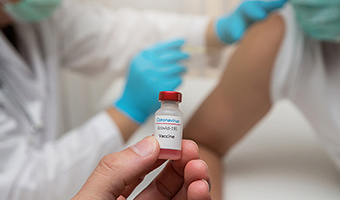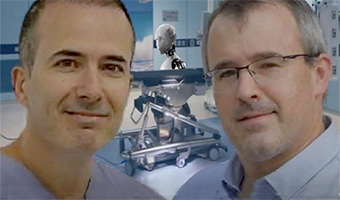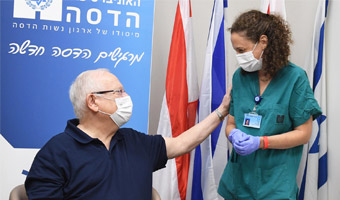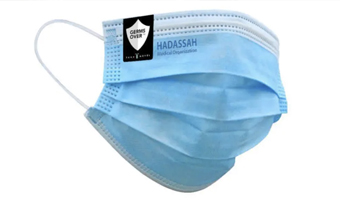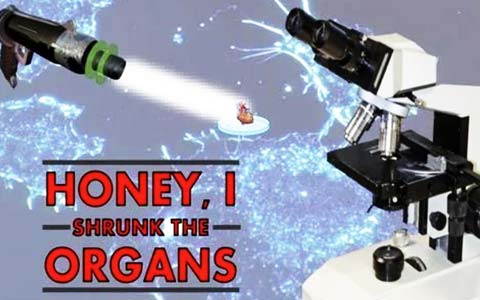
Classically, researchers in basic medical science have had two tools: in vitro cultures and animal models. The challenges posed by their limitations are many. Cells taken out of the human body and grown in a petri dish won’t behave exactly as they do within a real organ of the body. Animal models are not as highly complex as the human body, and they cannot capture the heterogeneity of human beings.
Today, however, basic science research is experiencing a revolution with the creation of organoids, 3D miniature cellular and functional replicas of our bodily organs. Organoids, grown from a tiny biopsy of cells from a patient, encompass the heterogeneity of the human organ and reveal the interaction of the cells with one another.
“Now, we have the closest model to the real thing, which enables us to study human disease in the best way,” explained Myriam Grunewald, PhD, head of the Hadassah Medical Organization’s newly established Organoid Center within Hadassah’s Wohl Institute for Translational Medicine. Dr. Grunewald shared the above explanation of classical medical science research and the significance of this revolution during the webinar “Honey, I Shrunk the Organs,” episode four of Hadassah International’s series “50 Shades of Health: A Journey Into the Future of Medicine.”
Dr.Liron Birimberg-Schwartz, medical director of the Organoid Center, and pediatric pulmonologist Dr.Alex Gileles-Hillel joined Dr. Grunewald in describing how organoids, in mimicking human organs, have the potential to enable physicians to better treat a patient with targeted therapy. Dr. Birimberg-Schwartz explained that, in the 1980s, a cystic fibrosis (CF) genetic mutation was discovered that causes a protein to malfunction, leading to a buildup of thick mucus, which, in turn, causes breathing difficulties and lung infections. Medicines were developed to treat the condition, but the drugs did not work on all patients. While doing a fellowship in Toronto, Canada, Dr. Birimberg-Schwartz recalls, she had a very ill CF patient for whom none of the current medicines were any help. Using organoid technology, she and her colleagues tested different drug combinations and discovered one that restored the patient’s protein function. “I understood then how significant this research is and how much we can affect patient outcomes,” she said. “I kept thinking that we have to do this faster.”
Dr. Gileles-Hillel, in his webinar presentation, explained that “an organoid is a versatile platform for replicating lung disorders.” In collaboration with Dr. Hans Clevers of the Hubrecht Institute, Royal Netherlands Academy of Arts and Sciences, he is using organoids to investigate the different ways that movement of the cilia, the fine cleansing hairs in our airways, is compromised in CF, so that the cilia can’t move mucus and pollutants out of the lungs. Once the organoids illuminate how cilia from a particular patient are functioning, the goal is to determine what will make them function more efficiently, Dr. Gileles-Hillel noted.
Dr. Clevers, the first to identify living adult stem cells in the intestines, used them to develop the first organoid. Perhaps one of the most fascinating elements of the organoid discovery is that with one adult stem cell a scientist can not only develop a fully grown miniature organ that mimics the actual human organ but also, as Dr. Birimberg-Schwartz noted, create an unlimited number of organoids. As long as an organ has adult stem cells, that organ can be recreated in an organoid. Furthermore, “these organoids begin to develop in a day or two,” she said.
“Depending on the complexity of the experiment, scientists will have enough cells for their research either within weeks or in a month or two.”
Dr.Grunewald and her colleagues are now establishing a bank of organoids representing different organs and individuals with a variety of genetic backgrounds. The goal is to capture as many diseases as possible, she noted. Each organoid is frozen and then, on demand, can be defrosted and used to either answer a basic scientific question—how bacteria in the gut triggers formation of tumor cells, for example—or to help a physician decide which drug to give a patient to achieve the best outcome.
As Dr. Birimberg-Schwartz reported, using organoid technology, researchers can test 120 drugs or drug combinations at a time and then tell the clinician, “This is the drug regimen I recommend you try first.”
What next? A few years down the road, it’s likely that organoids will be used not only for information but also to heal organs. An intestinal organoid, for example, replete with regenerating adult stem cells, may be re-implanted into a patient, locate the site of a lesion, and repair it. Organoid technology is clearly racing forward.
Learn more about the Hadassah Medical Organization.


